How to grow mushrooms - a fung-guide to help you grow an endless supply
Got shroom in your life to grow some mushrooms? It’s not easy to grow mushrooms from scraps, but it’s still possible
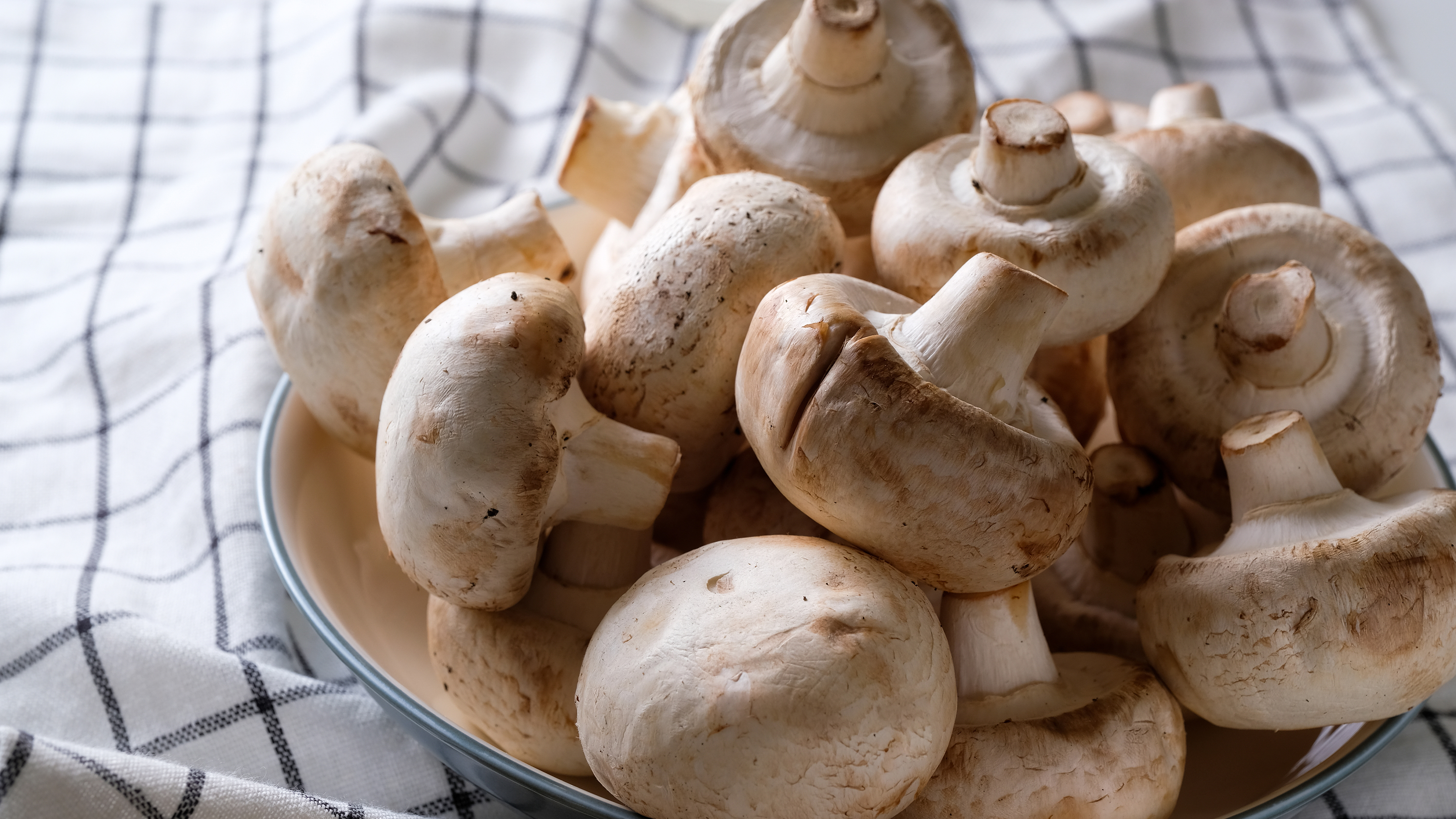

Mushrooms are the talk of the town right now, and it’s not hard to understand why. This fabulous fungus is on all of our minds, especially as so many of us are wondering why mushrooms are growing in our gardens. But have you ever wondered how to grow mushrooms from scraps?
Although it’s easy to head to your nearest supermarket and stock up on punnets of mushrooms, growing vegetables is a fun way to stretch your green fingers and save some serious money in the long run. And while investing in a mushroom growing kit is one way how to grow mushrooms, you’ll be happy to know that you don’t have to.
Yes, this is your sign to save your mushroom scraps next time you’re preparing a delicious mushroom-filled dinner. Keep the stems to one side, and follow this step-by-step guide on how to grow your own mushrooms at home.
How to grow mushrooms from scraps
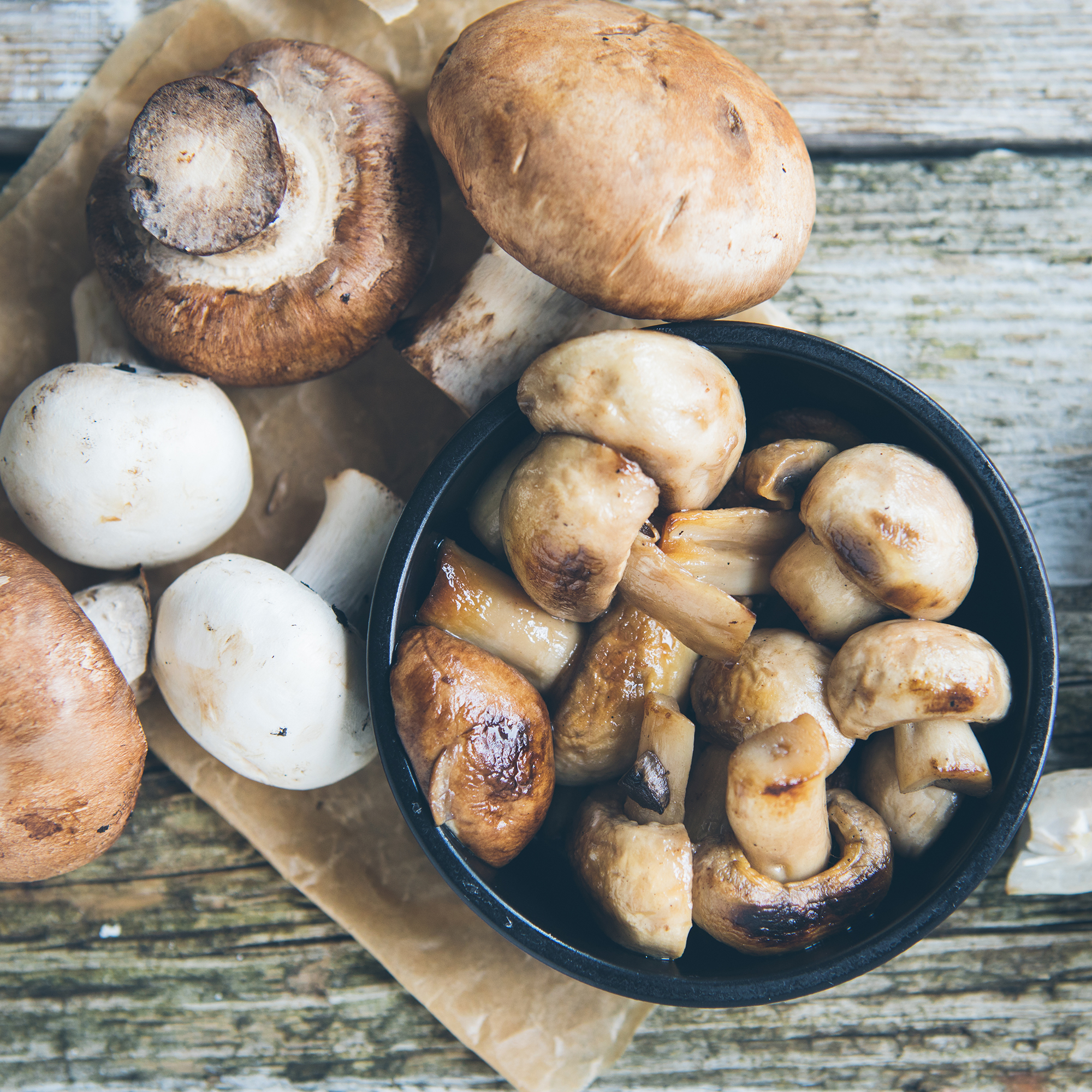
If you’re looking to grow mushrooms from scraps, it’s important to understand that your chances of success are pretty slim. However, it’s not impossible.
‘If you're looking to try something new and understand that this might not always be successful, then growing mushrooms from scraps is a great experiment,’ says gardening expert Steve Chilton from LeisureBench. So, why not give it go?
What you’ll need
- Mushroom stems (ideally organic)
- Gardening scissors - like these Housolution Pruning Shears
- Substrate - you could choose from soil, coffee grounds, straw and hamster bedding
- A container or tray - like this EarlyGrow Propagator
- A large plastic bag or cling film
Step-by-step
There are so many reasons why you should add growing mushrooms from scraps to your to-do list. With a constant supply at hand, you can add these delicious additions to any dish while also reaping the health benefits that come with this fungus.
‘The vitamins and minerals within the mushroom all support important roles within the human body,' advises herbalist Alex Fraysse, the founder of Spellbound. 'Adding in mushrooms into the diet will make sure that you are helping yourself as much as possible.' And this is how you can do it.
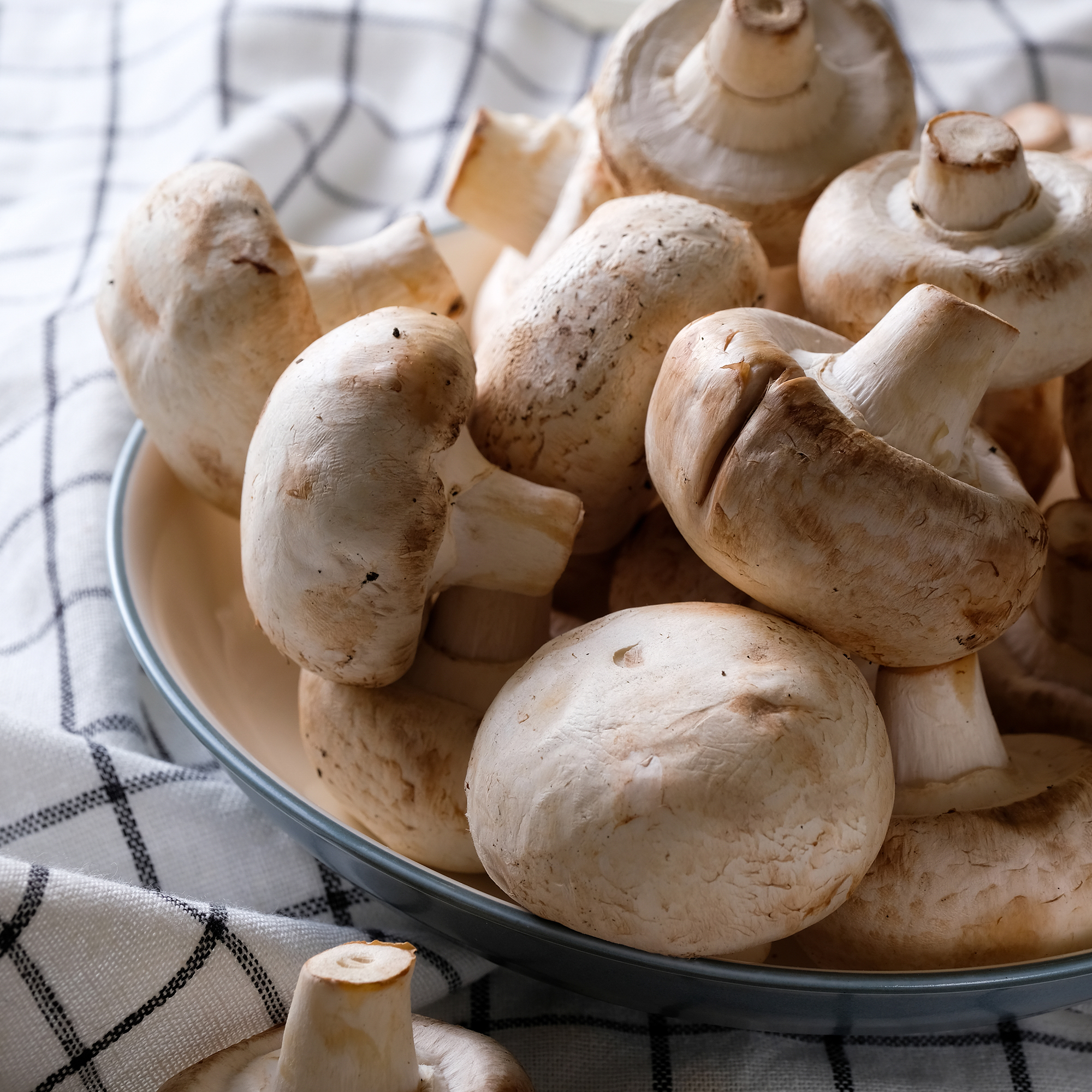
1. Choose your mushrooms
If you step into your local supermarket, there’s a high chance that you’ll be greeted with the same array of mushrooms. Button mushrooms, chestnut mushrooms, portobello mushrooms, and maybe even some fancy shiitake mushrooms if you’re lucky.
Thankfully, it’s possible to grow all of these mushrooms from scraps. ‘The stems retain mycelium, which can be cultivated to grow new mushrooms,’ explains Calum Maddock at HomeHow. 'In essence, you are cloning the parent mushroom through this method.'
However, if you want to increase your chances of successfully growing mushrooms yourself, it’s best to choose organic mushrooms.
‘Although you can use pretty much any store-bought mushroom, it’s recommended that you only re-grow organic mushrooms,' says Steve from LesiureBench. 'This is because of the organic nutrients in the mushrooms themselves.'
2. Prepare the substrate
Mushrooms require a substrate - an organic layer or substance - in order to grow. And while most mushroom growing kits come with this substrate already prepped and ready to use, you’ll need to prep this yourself if you’re looking to grow mushrooms from scraps.
There are so many different types of substrate you can use to do this. Generally, high-alkaline compost, coffee grounds, and straw are most commonly used. For this particular guide, though, we’re going to use hamster bedding as our substrate.
When you’ve chosen your substrate, you need to sanitise it to remove any outside toxins. ‘You will need to make sure that the substrate is sanitised, meaning that it has been put into a pressure cooker or another cooking device and brought to a boil in order to kill any sort of microbes that could interfere and contaminate the substrate. Then, cool and drain,' explains herbalist Alex.
When it is cool, layer the substrate - in this case, the hamster bedding - into your desired tray or pot. ‘Next, add water to the hamster bedding and let the bedding soak for a few days,' says Steve. 'It’s important that this bedding is damp as the mushroom needs consistent dampness to grow.'
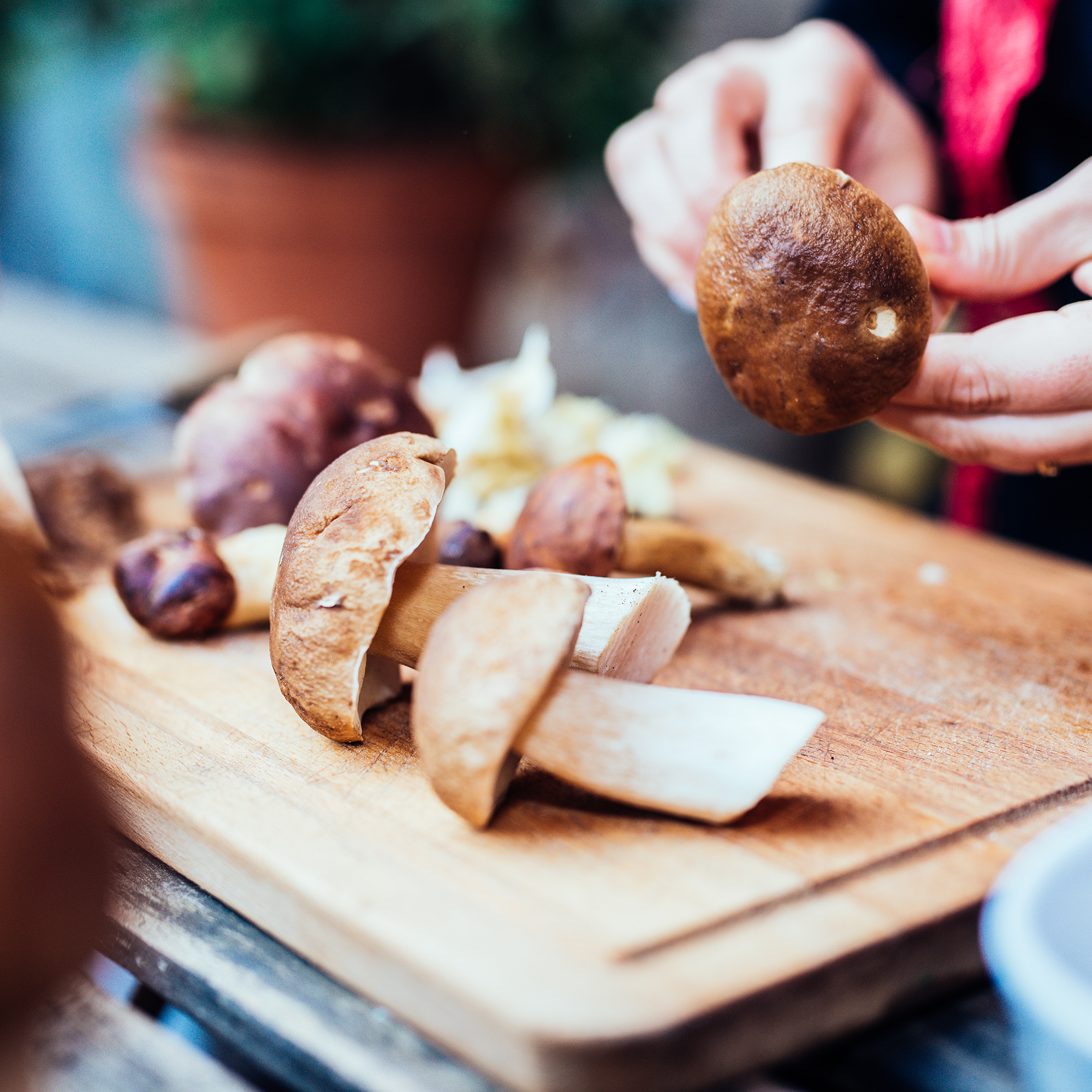
3. Prepare your mushroom stems
With your substrate prepped, you can turn your attention to the mushroom stems. While wearing gloves, simply cut the stem away from the cap with a sanitised knife or gardening scissors. And ideally, you want to have a mushroom stem that is at least 1cm long. Anything smaller than this, and you reduce your chances of success.
Once you have your stems, place them on top of the damp hamster bedding, and then add another layer of damp substrate on top. As mushrooms require damp and moist environments to grow, it’s important to give them the exact environment they need to thrive.
4. Create the perfect environment
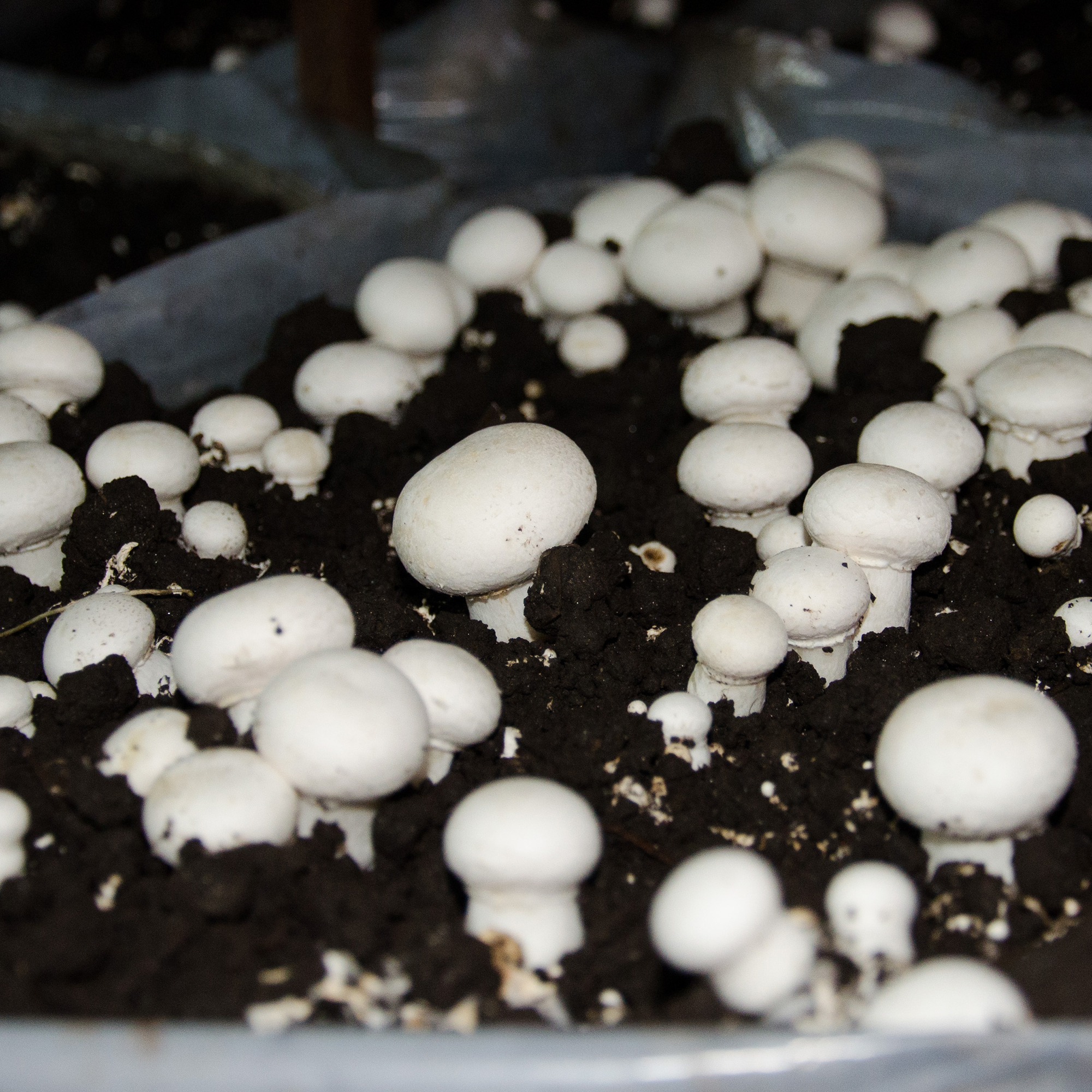
‘Knowing where to grow your mushrooms is key,’ says herbalist Alex. And the best way to ensure that your growing environment remains damp and moist is to cover the tray with a large plastic bag or some clingfilm.
However, you must poke holes in your plastic to allow for all-important air exchange if you want your mushrooms to grow. If you don’t, you’ll find that your mushrooms suffer under the constant CO2 build-up, and they'll either grow much slower or not grow at all.
When you’ve done this, find a dark room or cupboard (for example, under the sink) to keep the tray safe. You want this space to be a consistent temperature, so avoid placing your mushroom stems in an airing cupboard.
5. Tend to your mushrooms
The next stage is all part of the waiting game. And while it can be enticing to check up on your mushrooms every day, it’s best to leave them be during this stage.
In fact, you should only get involved if you see that your substrate is too dry. In that case, you can add some water to the tray to keep it nice and moist.
‘After around three weeks, your mushrooms should be growing,' says Steve from LeisureBench. 'Remove the plastic and add new cling film/plastic bag so that it “tents” up and over the planter slightly. This will allow the mushroom to flower. Your mushroom should be ready in just over two weeks after this point.’
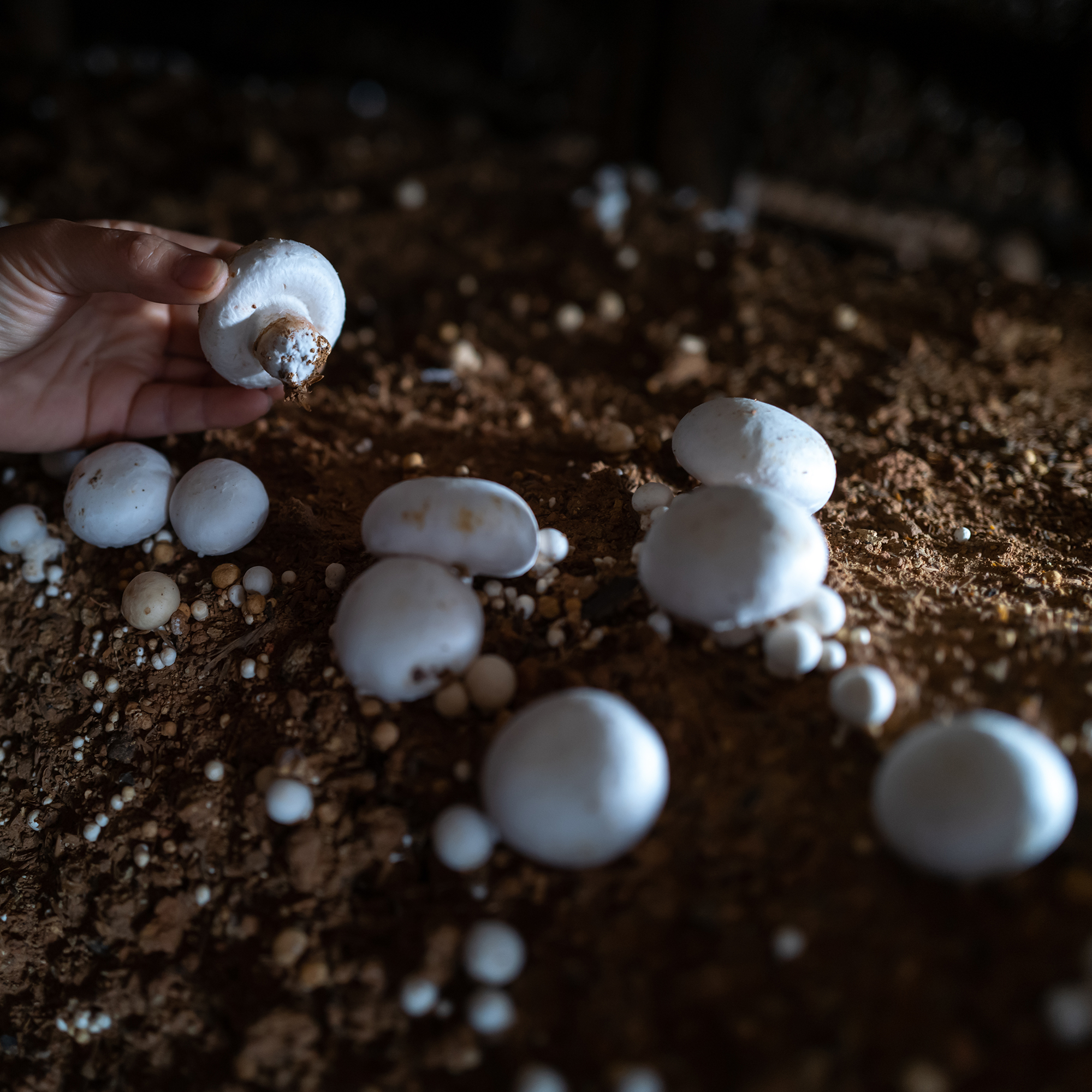
FAQs
Can you grow mushrooms from leftover mushrooms?
Yes! Although it’s sometimes easier to grow mushrooms using proper growing kits, that doesn’t mean that you can’t successfully grow mushrooms from leftover mushrooms. As these mushrooms are already fully-formed and full of mycelium - the building blocks for growing new mushrooms - you just need to make sure that you can replicate the ideal mushroom growing conditions at home.
Can I grow mushrooms in normal compost?
Yes. Mushrooms thrive in any substrate as long as it’s full of organic matter. And while you can grow mushrooms in normal compost, you might find more success if you add chalk or lime into the compost mix. These things will change the pH of the compost by making it more alkaline. Alternatively, you could buy a specific mushroom compost or use a homemade substrate such as coffee grounds or straw.
Get the Ideal Home Newsletter
Sign up to our newsletter for style and decor inspiration, house makeovers, project advice and more.

Lauren Bradbury has been the Content Editor for the House Manual section since January 2025 but worked with the team as a freelancer for a year and a half before that. She graduated with a Bachelor’s degree in English and Creative Writing from the University of Chichester in 2016. Then, she dipped her toe into the world of content writing, primarily focusing on home content. After years of agency work, she decided to take the plunge and become a full-time freelancer for online publications, including Real Homes and Ideal Home, before taking on this permanent role. Now, she spends her days searching for the best decluttering and cleaning hacks and creating handy how-to guides for homeowners and renters alike, as well as testing vacuums as part of her role as the Ideal Home Certified Expert in Training on Vacuums, having spent over 110 hours testing different vacuum models to date!
-
 Wood drenching is the calming new twist on the colour drenching trend – here’s how to make the look work in your home
Wood drenching is the calming new twist on the colour drenching trend – here’s how to make the look work in your homeIt’s easier than ever to embrace natural materials
By Maddie Balcombe
-
 Aldi is launching a £200 day bed with four different features - its sleek design is suited to the whole family
Aldi is launching a £200 day bed with four different features - its sleek design is suited to the whole familyYou don't want to miss out on this Specialbuy
By Kezia Reynolds
-
 How to set up a drip watering system that saves water and a lot of effort
How to set up a drip watering system that saves water and a lot of effortKeep your plants hydrated (and your water bill down) with this clever garden watering solution
By Natalie Osborn